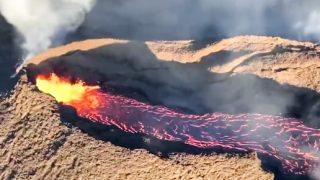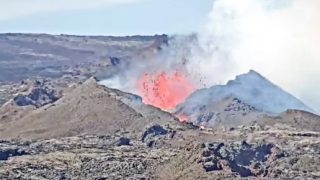

This is great news that we hope will be enduring. The VOG has been irritating to our lungs and skin and that of visitors, and has hurt Big Island tourism. It has also been destructive to crops including vegetables and flowers.
Recently we’ve noticed that even in southerly wind conditions, the VOG throughout the Hawaiian Island chain seems to have significantly improved. Sulfur dioxide emissions from Big Island’s Kilauea volcano, which had averaged 2,200 tons a day since last March, have dropped to approximately 850 tons a day.
Last year, even 250 miles away from the source, the VOG frequently prevailed at Beat of Hawaii’s home base on Kaua’i. Here’s how it looked in May 2008:


1. Airnow, the cross-agency governmental website, indicates that the levels of emissions on the Big Island are significantly better than we’ve noted since the sharp increase in emissions that occurred nearly a year ago.
2. The Honolulu Advertising is also reporting that scientists at the Hawaii Volcano Observatory have witnessed a sharp decrease in sulfur dioxide emissions at Mt. Kilauea.
While scientists apparently don’t know if this abatement will continue, all of us here in Hawaii certainly hope so.





